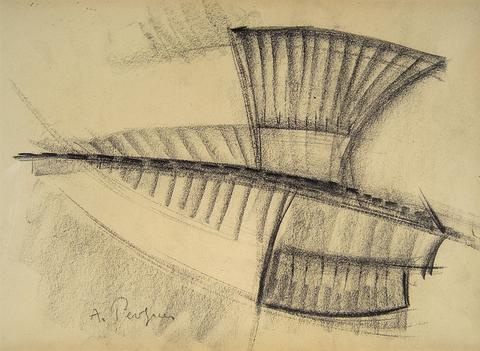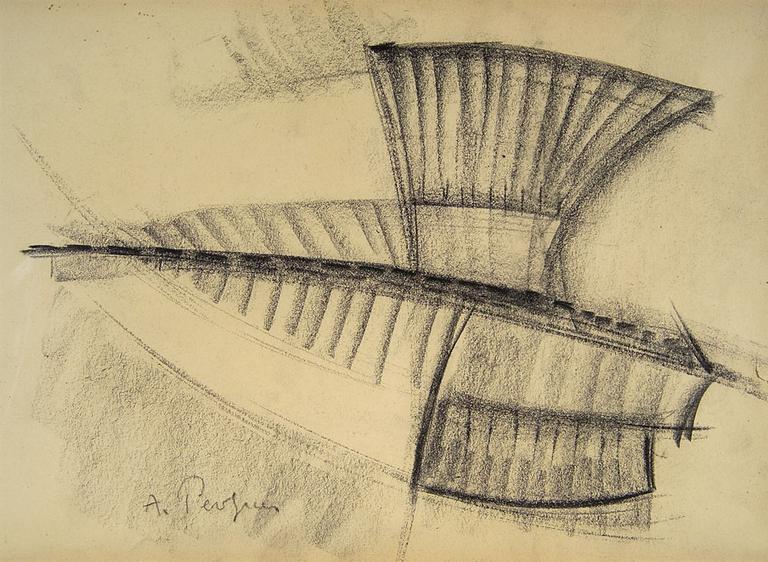
Composition
Anton Pevsner (1884 Klimovitchi - 1962 Paris)
1924
Crayon noir sur papier ; signé et daté en bas à gauche ; 23,5 x 32,5 cm
Provenance :
Paris, collection de Rabaudy ; Paris, collection privée ; Versailles, Perrin-Royère-Lajeunesse, 4 juillet 2010 ; Paris, collection Le Polyptyque ; Paris, collection privée.
Anton Pevsner et son frère Naum Gabo – qui s’installera en Angleterre puis aux États-Unis et changera de nom pour éviter la confusion – sont aujourd’hui considérés comme des pionniers de la sculpture moderne.
C’est pourtant une icône russe ancienne qui aurait décidé de la vocation du jeune Pevsner en visite dans un monastère. Il observa que selon la direction de la lumière, les yeux du saint prenaient une forme concave ou convexe. Il en aurait conçu l’idée que le vide peut être aussi expressif que le plein.
À Saint-Pétersbourg, puis à Paris en 1912, il entre en contact avec les avant-gardes de l’époque et tout particulièrement les cubistes. Mais c’est l’architecture métallique de la tour Eiffel qui le marque le plus. De retour en Russie, il peint des bas-reliefs cubistes, enseigne aux côtés de Kandinsky et Malevitch, côtoie Lissitzky, Rodchenko et Tatline, et publie avec Gabo le Manifeste réaliste, texte fondateur du constructivisme, en 1920.
En 1923 les deux frères prennent le prétexte d’une exposition en France pour fuir la Russie soviétique. Pevsner s’installe à Paris (il sera naturalisé en 1930) et donne libre cours à des créations radicalement originales, utilisant les matériaux innovants que sont alors le plexiglas, le nylon, le celluloïd et le plastique, visant à une translucidité aérienne.
C’est par le dessin que Pevsner continue d’approcher et de concevoir la sculpture, comme en témoigne cette Composition de 1924, où se distinguent parfaitement les éléments de son vocabulaire : arêtes de plexiglas, fils de nylon et de celluloïd pour construire les vides et les pleins, et former de grandes courbes spatiales. La sculpture née de l’imagination de l’artiste prend vie dans l’imagination du spectateur, relevant le défi propre au dessin de sculpteur.
